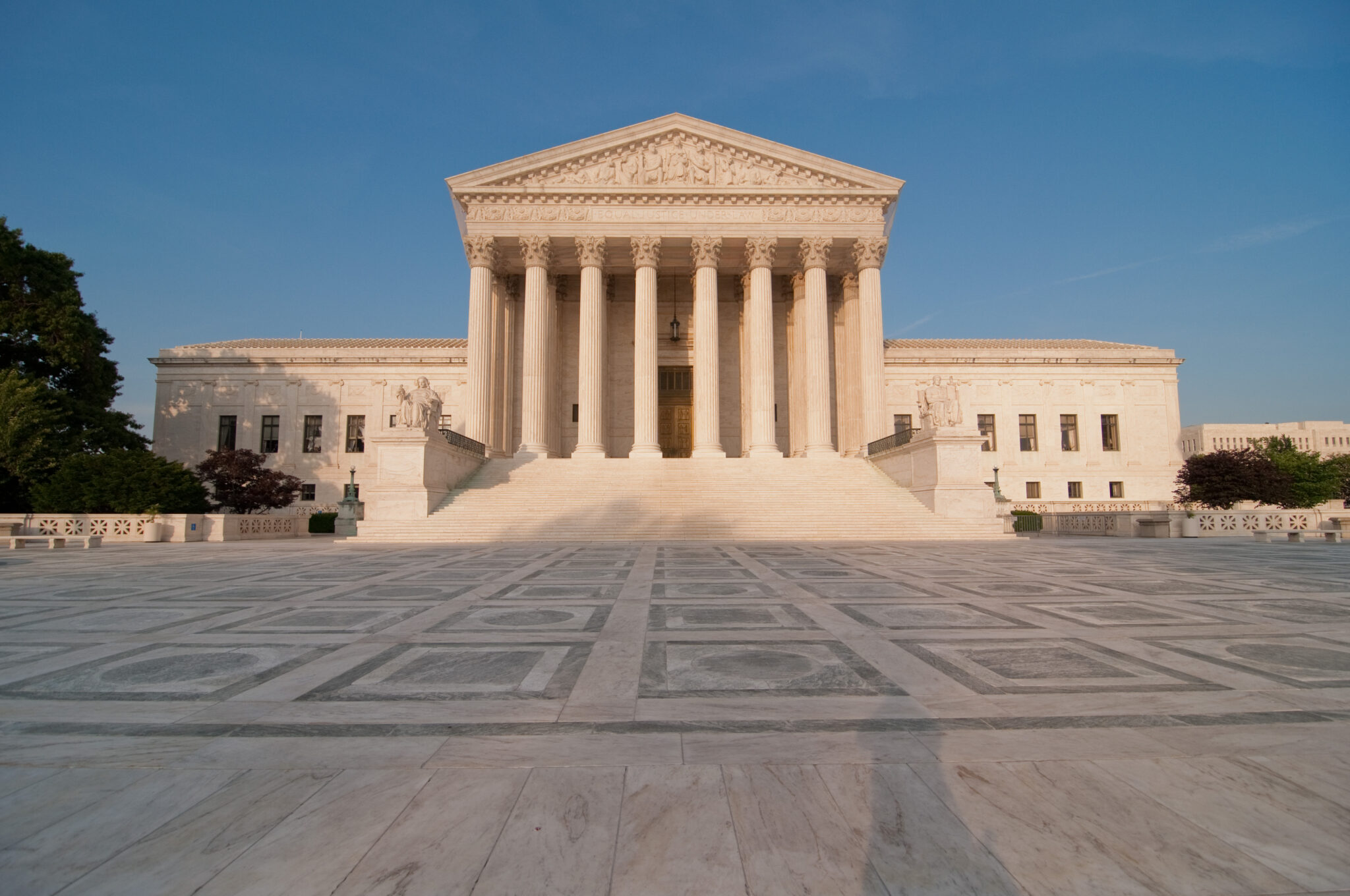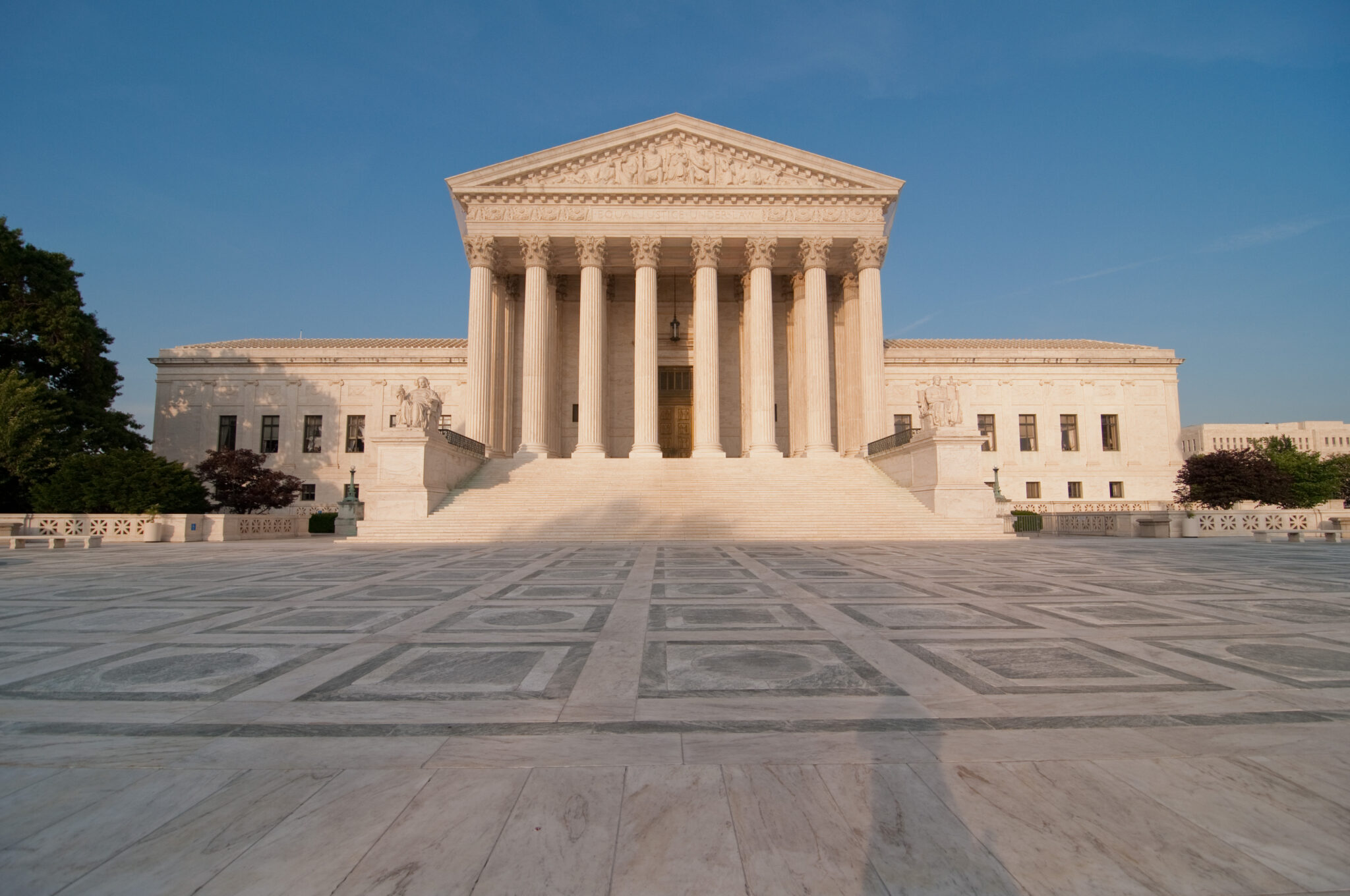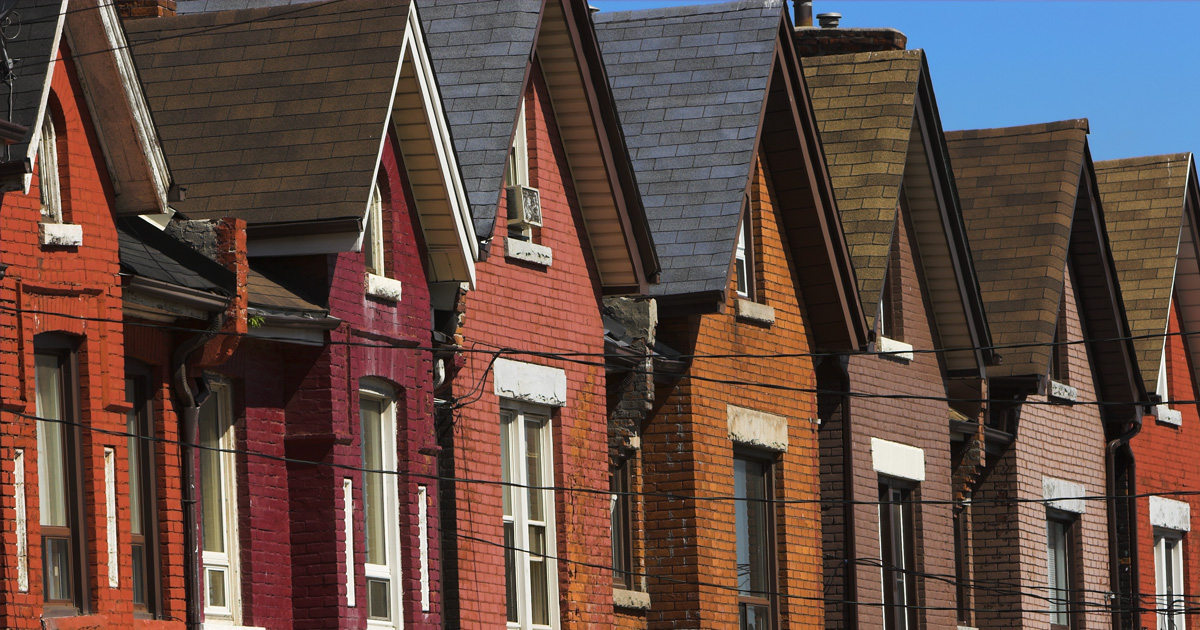The Supreme Court is about to rule in the case of the City of Grants Pass, Oregon v. Johnson, the first major case on homelessness to be heard by the Supreme Court since the 1980s.The case will determine the constitutionality of ticketing, fining, or arresting people for sleeping outdoors on public property, even if leaders have failed to produce enough affordable housing or shelter for everyone in the community who needs it.
- Should the Supreme Court rule in favor of the city, we will likely see even more elected officials choosing to fine and arrest people experiencing homelessness rather than investing in real solutions that would benefit the whole community. And inevitably, homelessness will continue to rise.
- Should the lower court standards remain, the case will reinforce the humanity of our most vulnerable residents.
But let’s be real: even a favorable ruling will not bring us any closer to ending homelessness in this country. It will, however, make clear the responsibility of elected officials at the federal, state, and local levels to produce sufficient permanent housing solutions and shelter accommodations for every person in their communities who needs them. For that, we need significant investments in evidence-based solutions to homelessness – like low barrier shelter; affordable housing; and services at the federal, state, and local levels.
Complex Problems Require Sophisticated Solutions
Far beyond the city of Grants Pass, there has been a rising tide of state and local laws aiming to respond to unsheltered homelessness with law enforcement tactics. This trend suggests that elected officials believe that this complex economic crisis can be solved with overly-simplified tactics that have been tried (and have failed to reduce homelessness) for decades. This is wholly inappropriate.
At this moment, it is essential that we help leaders understand that ending homelessness is not simple work, and that it cannot be achieved with simple tactics, or overly simplified understanding of homelessness data.
This post outlines the various information leaders need to make strategic and informed decisions on homelessness.
Understanding Point-in-Time Count Data
Every January, communities across the country recruit volunteers and coordinate a community-wide effort to count those experiencing homelessness at a point in time. While this data collection effort, which is required by the U.S. Department of Housing and Urban Development (HUD), is not a perfect instrument, it does provide a helpful year-over-year comparison nationally as well as at the state and local levels.
For example, between 2007 to 2016, homelessness declined in the United States each year, achieving an overall reduction of 15 percent. This was the result of broader implementation of evidence-based approaches and a more coordinated response to homelessness. However, since 2017 that trend has gone in the other direction. Between 2022 and 2023 alone, homelessness increased nationwide by 12 percent. These increases are often pressuring decision-makers towards the false promises of criminalization tactics as a quick and easy solution. Unfortunately, this decision ignores critical information that must guide homelessness response.
Broadening Our Lens
This is why one data set is not sufficient for making policy decisions. We must also use all available longitudinal housing and healthcare data to make strategic and informed decisions. We know from HUD System Performance Data that the number of people exiting homelessness into permanent housing is increasing each year. Therefore, the increases we see cannot be explained away as ineffective homelessness response systems. Let’s take a closer look at what we can see from other data.
- Housing Supply. The U.S. has a shortage of 7.3 million rental homes affordable and available to renters with extremely low incomes – that is, incomes at or below either the federal poverty guideline or 30% of their area median income, whichever is greater. This shortage is the result of various factors including land-use regulations, local zoning restrictions, an impacted labor market, and inflation impacts on cost of raw materials.
- Housing Cost. Between 2019 and 2021, the number of cost-burdened renters—defined as those spending more than 30 percent of their income on housing—increased by 1.2 million to a record 21.6 million households. Income growth has been slow for the lowest-paid workers and for people who receive a fixed income benefit such as Supplemental Security Income (SSI). As a result, 70% of the lowest-wage households routinely spend more than half of their income on rent, placing them at risk of homelessness if any unexpected expenses or emergencies arise. In fact, in 2021, HUD determined the highest level of households with Worst Case Housing Needs in the history of record keeping.
- Climate Change. Climate change is impacting available land, building costs, and insurance costs for both homeowners and renters. This exacerbates both housing supply and housing costs.
- Healthcare and Services. The healthcare system in the United States is wrought with challenges. Despite outspending other high-income countries, the US scores poorly on key health measures including life expectancy, preventable hospital admissions, and suicide. The high cost of healthcare and private insurance means that healthcare is out of reach for many. Other types of services that are provided by nonprofit organizations funded primarily through federal grants are woefully underfunded and understaffed making them inaccessible and unavailable to the majority of people who need them.
The systemic impacts of each of these factors play out in what we see in the homeless population:
- 17,000 people are entering homelessness for the first time nationally each week as the safety net has virtually disappeared.
- Older adults are the fastest growing group—a number that is expected to triple by 2030—as fixed incomes have not kept up with inflation.
- Compared to their overall proportion of the U.S. population, people of color are overrepresented in the homeless population with, for example, Black Americans experiencing homelessness at a rate of 3 to 1 compared to the general population. This should not be surprising, considering the disproportionate ways in which the factors above impact people of color.
- Unsheltered homelessness is rising at an alarming rate as people have nowhere else to go. Shelters are over capacity, have too-high barriers, or are not equipped to address the needs of people who have lost their housing.
- Homeless services staff are underpaid, and programs have too few staff to meet the demands of their rising caseloads.
We are at a crisis point in America. Any good faith analysis of the data above should make it clear that arresting people for being homeless is a completely insufficient response.
Building off Success
As communities begin to publicly release their 2024 Point-in-Time Count data, we are seeing signs of local progress in those places where there have been targeted investments, deep collaboration, and a commitment to best practices:
- Alameda County (California) reported a 3% decrease in homelessness, and an 11% decrease in unsheltered homelessness.
- Dallas and Collin Counties (Texas) reported a 19% decrease in homelessness, and a 24% decrease in unsheltered homelessness.
- Maricopa County (Arizona) reported a 2% decrease in homelessness, and a 17% decrease in unsheltered homelessness.
- Napa County (California) reported an 18% decrease in homelessness, and a 42% decrease in unsheltered homelessness.
At this moment, we need to highlight these success stories to our leaders, and we must help them understand how they were achieved: not by shortcuts, but with sophisticated, data-driven work.
Communities are safer and stronger when everyone has a safe place to call home and we will need to all work together to fight for the future we all deserve.
Stay Updated: Solutions, Stories, and Ways to Make an Impact
Sign up to receive updates on the Alliance’s work, including the latest research, advocacy efforts, and real stories of progress — plus ways you can help drive lasting change.














